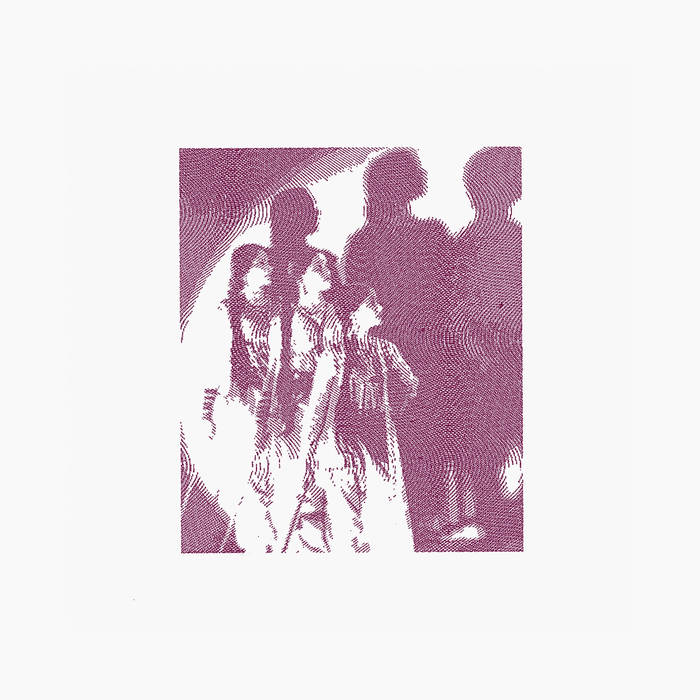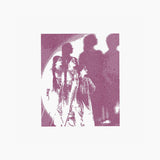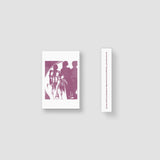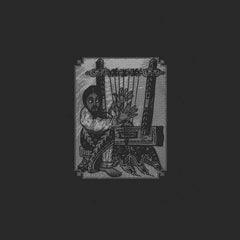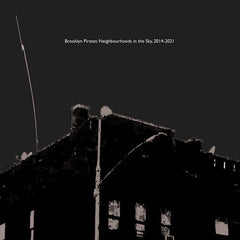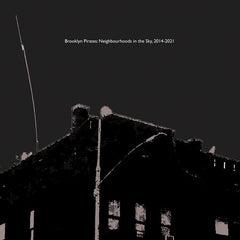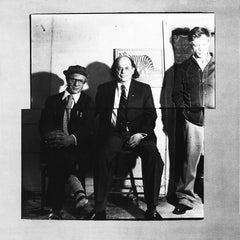Various Artists (Death Is Not The End / Bodega Pop) // Stars from Another Sky Pt. 1: Film Songs from the Subcontinent Before the World Was Torn Asunder, 1932-1939 MIX TAPE
- Availability:
イギリス・ロンドンの発掘専門レーベルDeath Is Not The Endが、2025年3月にリリースした1930年代南アジア映画音楽にフォーカスしたコンピレーションカセットです。
※デジタル音源を無料でお送りいたしますのでお気軽にご連絡くださいませ
以下、レーベルによる解説です。
"20年間無声映画が続いた後、1931年にアラム・アラが沈黙を破ったとき、この映画とそれに続くすべての南アジアのトーキーが、西洋の私たちが考える 「ミュージカル 」だったことに驚く人もいるかもしれない。音楽は、紀元4世紀から6世紀にかけてのグプタ王朝時代までさかのぼる、この文化の舞台劇に不可欠なものだった。南アジア映画はその創成期から、マラーティー語、パールシー語、ベンガル語の音楽劇を多用し、無声映画の上映にはしばしば生演奏がつきものだった。
サウンドフィルムが登場すると、本格的な歌唱力を持つ俳優が次のスターとなった。歌は撮影中に生演奏され、ミュージシャンはカメラの外や脇、時には木の上などに隠れて演奏された。プレイバック・シンギング(口パク俳優に本物の歌手の声を吹き込むこと)は、1940年代まで標準的ではなかった。
ゴビンドラオ・テンベやパンカジ・ミュリックのように、作曲家としてもヴォーカリストとしても優れた歌手もいた。しかし、K.L.サイガールほど愛された歌手はいなかった。彼の感情的で訓練されていない歌声は、亜大陸中の聴衆を魅了した。サイガルの歌声に感化された若きラタ・マンゲーシュカルは、彼のハートを射止めるためにインド最高の映画歌手になろうと誓った。悲しいことに、サイガルは次第にアルコールに溺れるようになり、アルコールなしでは活動できなくなり、パーティションの7ヶ月前、42歳でこの世を去った。ラタは結婚しなかった。
このコレクションは、クイーンズのジャクソン・ハイツ、ブルックリンのコニー・アイランド・アヴェニュー、マンハッタンのレキシントン・アヴェニュー、ニュージャージー州イゼリンのオーク・ツリー・ロードといった、活気ある移民コミュニティがある地域で発見されたCDやLPから、南アジア映画で最も初期の曲を集めたものだ。ニューヨークとニュージャージーへの南アジア系移民が急増したのは、1965年の移民国籍法施行後である。1990年代から2000年代にかけて、この地域のインド系、パキスタン系、バングラデシュ系のメディアは隆盛を極め、特にジャクソンハイツでは、そうした店が5つの行政区全体にある通常のレコード店の総数を上回った。
サウンドフィルムの黎明期には、音楽スタイルも限られており、ガザールのようなマラーティー語のバグヴィートや、ベンガル語のノーベル賞受賞者ラビンドラナート・タゴールが作曲した約2,000曲の歌と詩のラビンドラ・サンゲートなどが主流だった。しかし、南アジア映画初の女性作曲家であり、クラシックの訓練を受けたサラスワティ・デヴィの成功や、ピアノやハワイアン・ギターなどの西洋楽器の導入など、進化もあった。
音楽の多くは暗く陰鬱なもので、1936年の『Achhut Kannya(Untouchable Maiden)』からサラスヴァティ・デヴィの「Udi Hawa Mein」をデヴィカ・ラーニーが解釈したのがその最たる例だろうが、R.C.ボラールの「Lachhmi Murat Daras Dikhaye」のような明るい瞬間もあった。C.ボラールの「Lachhmi Murat Daras Dikhaye」は、1938年の『ストリート・シンガー』でカナン・デーヴィが歌い、デヴィと共演のK.L.サイガールのスーパースターとしての地位を確固たるものにした。
このセレクションは、この10年間という比較的限られた範囲の中でさえ達成された表現力、楽器編成、スタイルの幅広さを強調するために選ばれたものであり、このシリーズの次回で取り上げる1940年代の相対的な可能性の爆発を聴き手に予感させるものである。"
レーベルその他作品はこちら /// Click here to see more Death Is Not The End releases available at Tobira.
--------------------------------------
Cassette in norelco case.
Tracklist:
1. K.L. Saigal, R.C. Boral - Din Neeke Beete Jaate Hain 03:11
2. Shanta Apte, Master Krishnarao - Suno Suno Ban Ke Prani 03:04
3. Govindrao Tembe - Chhod Aakash Ke Sitare 03:05
4. Devika Rani, Saraswati Devi - Udi Hawa Mein 03:13
5. K.C. Dey, R.C. Boral - Panghat Pe Kanhaiya Aata Hai 03:16
6. Pankaj Mullick - Sharabi Soch Na Kar 03:16
7. Kanan Devi, R.C. Boral - Lachhmi Murat Daras Dikhaye 03:18
8. Surendra & Bibbo - Tumhi Ne Mujhko Prem Sikhaya 03:23
9. Sheela, Mir Sahib - Tum Bin Hamri Kaun Khabar Le 03:21
10. Govindrao Tembe - Jao Jao Aye Mere Saadhu 03:21
11. K.L Saigal, R.C. Boral - Babul Mora 03:08
12. Pankaj Mullick - Piya Milan Ko Jana 03:38
13. Vishnupant Pagnis, Gyan Dutt - Ban Chale Ram Raghurai 02:57
14. Kanan Devi, R.C. Boral - Na Jane Kya Hai Dil Ka Raaz 03:19
15. Shanta Apte, Keshavrao Bhole - Raat Aai Hai 03:09
16. K.C. Dey - Kya Kaaran Hai Ab Rone Ka 03:15
17. Uma Devi & Pahari Sanyal, R.C. Boral - Mere Prem Ki Naiyya 03:20
18. K.L Saigal, Timir Baran - Balam Aaye Baso 03:19
Text by Gary Sullivan (Bodega Pop) :
"It may surprise some that, after two decades of silent films, when Alam Ara broke the silence in 1931, it and every South Asian talkie that followed was what we in the West think of as a “musical.” Music had been integral to the culture’s staged drama going back to the Gupta Dynasty — sometime between the 4 th and 6 th Century CE. Since its inception, South Asian cinema drew heavily from Marathi, Parsi, and Bengali musical theatre and silent film screenings were often accompanied by live music to mimic a live staged experience.
When sound films arrived, actors with serious singing skills became the next wave of stars. Songs were performed live while shooting, with musicians hidden off-camera, to the side or sometimes even in trees. Playback singing — the practice of dubbing a real singer’s voice over a lip-syncing actor — didn’t become standard until the 1940s.
Thus, the biggest stars of the 1930s were also the greatest singers, with some, like Govindrao Tembe and Pankaj Mullick, excelling as both composers and vocalists. None, however, were more beloved than K.L. Saigal, whose emotional, untrained crooning captivated audiences across the subcontinent. Saigal’s voice inspired a young Lata Mangeshkar, who vowed to become India’s greatest filmi singer to win his heart. Sadly, Saigal grew increasingly addicted to alcohol, unable to perform without it, and passed away at age 42, seven months before the Partition. Lata never married.
This collection features some of the earliest songs from South Asian cinema, sourced from CDs and LPs found in Jackson Heights, Queens, Coney Island Avenue in Brooklyn, Lexington Avenue in Manhattan, and Oak Tree Road in Iselin, New Jersey — areas home to vibrant immigrant communities. South Asian immigration to New York and New Jersey surged after the 1965 Immigration and Nationality Act, which lifted non-European quotas. By the 1990s and 2000s, the region’s Indian, Pakistani, and Bangladeshi media outlets flourished, especially in Jackson Heights, where such stores outnumbered the total number of regular record shops throughout the five boroughs.
The nascent period of sound film featured a limited palette of musical styles, predominantly Marathi Bhagveet, like the Ghazal, but with greater flexibility of subject matter and rhythm, and Rabindra Sangeet, the approximately 2,000 songs and poems composed by Bengali Nobel laureate Rabindranath Tagore. But there was some evolution as well, with the success of South Asian cinema’s first woman composer, the classically trained Saraswati Devi, and the introduction of Western instruments including the piano and Hawaiian guitar.
While much of the music was dark and brooding, perhaps exemplified best by Devika Rani’s interpretation of Saraswati Devi’s “Udi Hawa Mein” from 1936’s Achhut Kannya (Untouchable Maiden), there were moments of brightness, such as R.C. Boral’s “Lachhmi Murat Daras Dikhaye” sung by Kanan Devi in Street Singer, an otherwise thoroughly depressing film from 1938 that cemented Devi’s and co-star K.L. Saigal’s superstardom.
This selection was chosen to emphasise a range of expressivity, instrumentation and style achieved even within the decade’s relatively limited scope, setting the listener up for the relative explosion of possibility in the 1940s, to be covered in the next installment of this series."
Artist : Various Artists
Label : Death Is Not The End x Bodega Pop
cat no : DEATH103
イギリス・ロンドンの発掘専門レーベルDeath Is Not The Endが、2025年3月にリリースした1930年代南アジア映画音楽にフォーカスしたコンピレーションカセットです。
※デジタル音源を無料でお送りいたしますのでお気軽にご連絡くださいませ
以下、レーベルによる解説です。
"20年間無声映画が続いた後、1931年にアラム・アラが沈黙を破ったとき、この映画とそれに続くすべての南アジアのトーキーが、西洋の私たちが考える 「ミュージカル 」だったことに驚く人もいるかもしれない。音楽は、紀元4世紀から6世紀にかけてのグプタ王朝時代までさかのぼる、この文化の舞台劇に不可欠なものだった。南アジア映画はその創成期から、マラーティー語、パールシー語、ベンガル語の音楽劇を多用し、無声映画の上映にはしばしば生演奏がつきものだった。
サウンドフィルムが登場すると、本格的な歌唱力を持つ俳優が次のスターとなった。歌は撮影中に生演奏され、ミュージシャンはカメラの外や脇、時には木の上などに隠れて演奏された。プレイバック・シンギング(口パク俳優に本物の歌手の声を吹き込むこと)は、1940年代まで標準的ではなかった。
ゴビンドラオ・テンベやパンカジ・ミュリックのように、作曲家としてもヴォーカリストとしても優れた歌手もいた。しかし、K.L.サイガールほど愛された歌手はいなかった。彼の感情的で訓練されていない歌声は、亜大陸中の聴衆を魅了した。サイガルの歌声に感化された若きラタ・マンゲーシュカルは、彼のハートを射止めるためにインド最高の映画歌手になろうと誓った。悲しいことに、サイガルは次第にアルコールに溺れるようになり、アルコールなしでは活動できなくなり、パーティションの7ヶ月前、42歳でこの世を去った。ラタは結婚しなかった。
このコレクションは、クイーンズのジャクソン・ハイツ、ブルックリンのコニー・アイランド・アヴェニュー、マンハッタンのレキシントン・アヴェニュー、ニュージャージー州イゼリンのオーク・ツリー・ロードといった、活気ある移民コミュニティがある地域で発見されたCDやLPから、南アジア映画で最も初期の曲を集めたものだ。ニューヨークとニュージャージーへの南アジア系移民が急増したのは、1965年の移民国籍法施行後である。1990年代から2000年代にかけて、この地域のインド系、パキスタン系、バングラデシュ系のメディアは隆盛を極め、特にジャクソンハイツでは、そうした店が5つの行政区全体にある通常のレコード店の総数を上回った。
サウンドフィルムの黎明期には、音楽スタイルも限られており、ガザールのようなマラーティー語のバグヴィートや、ベンガル語のノーベル賞受賞者ラビンドラナート・タゴールが作曲した約2,000曲の歌と詩のラビンドラ・サンゲートなどが主流だった。しかし、南アジア映画初の女性作曲家であり、クラシックの訓練を受けたサラスワティ・デヴィの成功や、ピアノやハワイアン・ギターなどの西洋楽器の導入など、進化もあった。
音楽の多くは暗く陰鬱なもので、1936年の『Achhut Kannya(Untouchable Maiden)』からサラスヴァティ・デヴィの「Udi Hawa Mein」をデヴィカ・ラーニーが解釈したのがその最たる例だろうが、R.C.ボラールの「Lachhmi Murat Daras Dikhaye」のような明るい瞬間もあった。C.ボラールの「Lachhmi Murat Daras Dikhaye」は、1938年の『ストリート・シンガー』でカナン・デーヴィが歌い、デヴィと共演のK.L.サイガールのスーパースターとしての地位を確固たるものにした。
このセレクションは、この10年間という比較的限られた範囲の中でさえ達成された表現力、楽器編成、スタイルの幅広さを強調するために選ばれたものであり、このシリーズの次回で取り上げる1940年代の相対的な可能性の爆発を聴き手に予感させるものである。"
レーベルその他作品はこちら /// Click here to see more Death Is Not The End releases available at Tobira.
--------------------------------------
Cassette in norelco case.
Tracklist:
1. K.L. Saigal, R.C. Boral - Din Neeke Beete Jaate Hain 03:11
2. Shanta Apte, Master Krishnarao - Suno Suno Ban Ke Prani 03:04
3. Govindrao Tembe - Chhod Aakash Ke Sitare 03:05
4. Devika Rani, Saraswati Devi - Udi Hawa Mein 03:13
5. K.C. Dey, R.C. Boral - Panghat Pe Kanhaiya Aata Hai 03:16
6. Pankaj Mullick - Sharabi Soch Na Kar 03:16
7. Kanan Devi, R.C. Boral - Lachhmi Murat Daras Dikhaye 03:18
8. Surendra & Bibbo - Tumhi Ne Mujhko Prem Sikhaya 03:23
9. Sheela, Mir Sahib - Tum Bin Hamri Kaun Khabar Le 03:21
10. Govindrao Tembe - Jao Jao Aye Mere Saadhu 03:21
11. K.L Saigal, R.C. Boral - Babul Mora 03:08
12. Pankaj Mullick - Piya Milan Ko Jana 03:38
13. Vishnupant Pagnis, Gyan Dutt - Ban Chale Ram Raghurai 02:57
14. Kanan Devi, R.C. Boral - Na Jane Kya Hai Dil Ka Raaz 03:19
15. Shanta Apte, Keshavrao Bhole - Raat Aai Hai 03:09
16. K.C. Dey - Kya Kaaran Hai Ab Rone Ka 03:15
17. Uma Devi & Pahari Sanyal, R.C. Boral - Mere Prem Ki Naiyya 03:20
18. K.L Saigal, Timir Baran - Balam Aaye Baso 03:19
Text by Gary Sullivan (Bodega Pop) :
"It may surprise some that, after two decades of silent films, when Alam Ara broke the silence in 1931, it and every South Asian talkie that followed was what we in the West think of as a “musical.” Music had been integral to the culture’s staged drama going back to the Gupta Dynasty — sometime between the 4 th and 6 th Century CE. Since its inception, South Asian cinema drew heavily from Marathi, Parsi, and Bengali musical theatre and silent film screenings were often accompanied by live music to mimic a live staged experience.
When sound films arrived, actors with serious singing skills became the next wave of stars. Songs were performed live while shooting, with musicians hidden off-camera, to the side or sometimes even in trees. Playback singing — the practice of dubbing a real singer’s voice over a lip-syncing actor — didn’t become standard until the 1940s.
Thus, the biggest stars of the 1930s were also the greatest singers, with some, like Govindrao Tembe and Pankaj Mullick, excelling as both composers and vocalists. None, however, were more beloved than K.L. Saigal, whose emotional, untrained crooning captivated audiences across the subcontinent. Saigal’s voice inspired a young Lata Mangeshkar, who vowed to become India’s greatest filmi singer to win his heart. Sadly, Saigal grew increasingly addicted to alcohol, unable to perform without it, and passed away at age 42, seven months before the Partition. Lata never married.
This collection features some of the earliest songs from South Asian cinema, sourced from CDs and LPs found in Jackson Heights, Queens, Coney Island Avenue in Brooklyn, Lexington Avenue in Manhattan, and Oak Tree Road in Iselin, New Jersey — areas home to vibrant immigrant communities. South Asian immigration to New York and New Jersey surged after the 1965 Immigration and Nationality Act, which lifted non-European quotas. By the 1990s and 2000s, the region’s Indian, Pakistani, and Bangladeshi media outlets flourished, especially in Jackson Heights, where such stores outnumbered the total number of regular record shops throughout the five boroughs.
The nascent period of sound film featured a limited palette of musical styles, predominantly Marathi Bhagveet, like the Ghazal, but with greater flexibility of subject matter and rhythm, and Rabindra Sangeet, the approximately 2,000 songs and poems composed by Bengali Nobel laureate Rabindranath Tagore. But there was some evolution as well, with the success of South Asian cinema’s first woman composer, the classically trained Saraswati Devi, and the introduction of Western instruments including the piano and Hawaiian guitar.
While much of the music was dark and brooding, perhaps exemplified best by Devika Rani’s interpretation of Saraswati Devi’s “Udi Hawa Mein” from 1936’s Achhut Kannya (Untouchable Maiden), there were moments of brightness, such as R.C. Boral’s “Lachhmi Murat Daras Dikhaye” sung by Kanan Devi in Street Singer, an otherwise thoroughly depressing film from 1938 that cemented Devi’s and co-star K.L. Saigal’s superstardom.
This selection was chosen to emphasise a range of expressivity, instrumentation and style achieved even within the decade’s relatively limited scope, setting the listener up for the relative explosion of possibility in the 1940s, to be covered in the next installment of this series."
Artist : Various Artists
Label : Death Is Not The End x Bodega Pop
cat no : DEATH103

